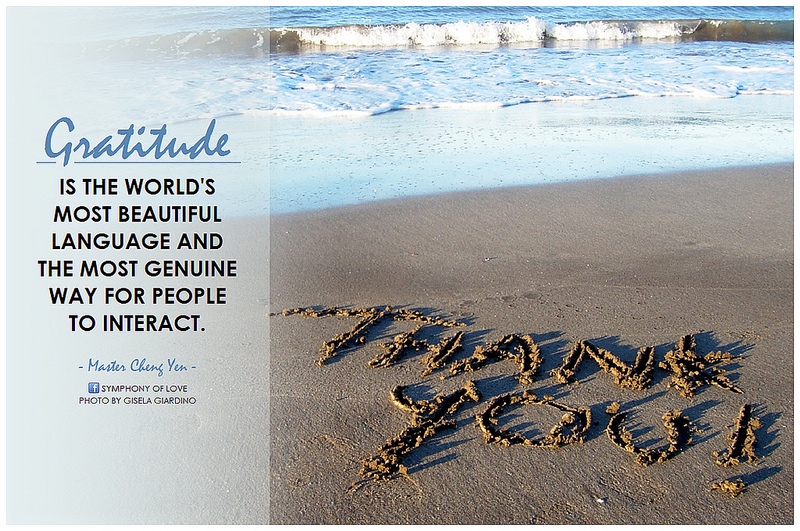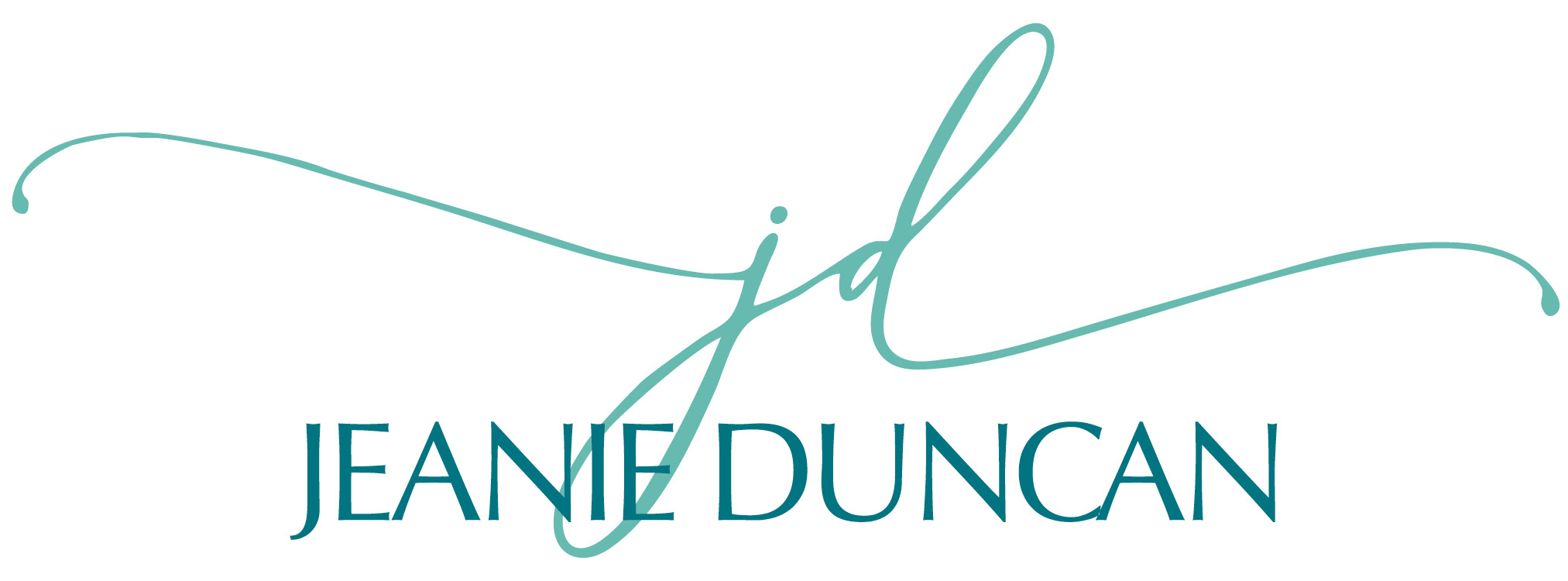
Dec 22, 2014 | Intention

January lures me to a place of reflection of the prior year and intention and goal setting for the year ahead. It’s my way of honoring life events, learning from what I’ve experienced, and dreaming of what I most want.
Over time, I’ve developed a some tools that serve me well in this process. Here are a few favorites that I hope you will find of value.
- Take a blank sheet of paper and draw a vertical line down the middle of the page. On the left side at the top, write “Freedom From” (What do I want to STOP doing?). On the right side, write “Freedom Toward” (What do I want to be or START doing?). Then down the far left column, write these words: Career, Family & Friends, Significant other / Romance, Fun & Recreation, Health, Money, Personal Growth, and Physical Environment. Complete each column in terms of ‘freedom from’ and ‘freedom toward’. This exercise will help you create alignment in the direction toward what matters most.
- Another exercise I find valuable is completing Stephen Covey’s Time Management Matrix, which I have sample-populated below from a business perspective. I like to do this including both work and family elements, sometimes in two different grids. I don’t know about you, but much of my day quickly can be filled with the 3rd quadrant – the seemingly urgent, but less important things. At the end of those days, it’s hard to note anything meaningful that I’ve accomplished. Ideally, I use this tool not only at the beginning of a new year, but also at the beginning of each month and week to keep me focused on what matters most.

- Journaling can be another effective outlet to reflect and draw out thoughts about the past year and help focus and imagine the 12 months ahead. Consider the writing prompts below as you complete this exercise.
Reflecting on the prior year:
- What am I celebrating?
- What were the most significant events of the year past?
- What’s going well? …not so well?
- How am I leveraging my strengths?
- What did I learn? (skills, knowledge, insights, etc.)
- What would I have done differently?
- What did I complete or release? What still feels incomplete to me?
- How am I different this year than last?
- For what am I particularly grateful?
Imagining the year ahead:
- What intentions do I have for the coming year?
- What is the commitment I want to make for: my work, my family, my self?
- How do I want to approach things differently?
- How do I want to spend my time?
- What would I do if I knew I couldn’t fail?
- How and with whom do I most want to spend my time?
- How will I honor my core values?
- Imagine that it is 6 months from now, and I’ve acted on my intentions or met my goals. What is like? How does it feel? What resources and support surround me?
A final critical piece to goal setting is to enroll an accountability partner. As you refine your intentions and goals for the year, ask a friend or colleague to help support you and hold you accountable. Set a schedule where s/he will followup and ask you about your progress. They can serve as an important ally in helping you move past barriers as well as celebrate your progress (big and small). Choose someone who will challenge and stretch you and call you out when you’re playing small!
Best wishes to you in this experience and bringing forth your best self in the year ahead!
 About Jeanie Duncan: Jeanie is President of Raven Consulting Group, a business she founded that focuses on organizational change and leadership development in the nonprofit sector. She is a senior consultant for Raffa, a national firm working with nonprofit clients to lead efforts in sustainability and succession planning, executive transition and search. Additionally, Jeanie serves as adjunct faculty for the Center for Creative Leadership, a top-ranked, global provider of executive leadership education.
About Jeanie Duncan: Jeanie is President of Raven Consulting Group, a business she founded that focuses on organizational change and leadership development in the nonprofit sector. She is a senior consultant for Raffa, a national firm working with nonprofit clients to lead efforts in sustainability and succession planning, executive transition and search. Additionally, Jeanie serves as adjunct faculty for the Center for Creative Leadership, a top-ranked, global provider of executive leadership education.

Nov 26, 2014 | Intention
 During a staff meeting one day, one of my employees passed out paper bags – the kind you packed your lunch in as a child. She sat a big box in the middle of the table and lifted the lid. Inside, it was filled with magic markers, crayons, and colored pencils. She instructed us to decorate our own personal bag in such a way that would make us smile. Everyone jumped in and began the impromptu art project.
During a staff meeting one day, one of my employees passed out paper bags – the kind you packed your lunch in as a child. She sat a big box in the middle of the table and lifted the lid. Inside, it was filled with magic markers, crayons, and colored pencils. She instructed us to decorate our own personal bag in such a way that would make us smile. Everyone jumped in and began the impromptu art project.
Next, she passed out strips of paper and asked each of us to write something we liked or appreciated about every staff member around the table, then fold it up, and drop it in our colleagues’ bags. In the coming weeks, she suggested that we keep the bags on our desks and continue writing these simple acknowledgment notes for one another. Then, whenever we need a “pick me up,” reach in, grab a handful of notes, and read them to ourselves.
I’m no longer with that organization, but the bag still sits on the desk in my office. Powerful, isn’t it?
I’m thinking about this in particular today as we get ready to celebrate Thanksgiving tomorrow. How often do we pause to say thank you and other nice things about those with whom we work? The formal feedback, like annual performance reviews, gets done, but what about the smaller things? Isn’t it really these simple things that make the biggest difference? It’s what defines a workplace’s culture – mojo I call it. And it’s a key part of building team commitment, loyalty, and satisfaction.
In all workplaces, but perhaps even more important in the nonprofit sector, we need to identify the simple, yet powerful actions and benefits that help us recruit and retain our people. After all, it’s our single greatest resource.
Even if you don’t undertake a “project” like this in your workplace, take time today to thank and acknowledge those around you. Maybe even try it with your family over Thanksgiving. Cheers to a wonderful holiday!
photo credit: symphony of love via photopin cc

Nov 6, 2014 | Authenticity, Intention

I spoke at an executive women’s conference recently where the program centered around the theme of “Having it All.” Speakers and panelists offered perspectives on this topic that ranged from myth to miracle.
Often, when I hear people talk about “having it all,” the conversation is about volume…as in “super-size” me. I get this image of a caped super-human individual with the mystic powers to be a deeply devoted parent, put in 12-hours at the office, work out at the gym, manage the household, and get a full night’s rest. I don’t buy in to this steel facade of “I got this! I can do it all and have it all.” Maybe this can occur in the short-term, but it’s certainly not a sustainable nor fulfilling way to live.
What if this idea of “having it all” is instead about abundance and our making the choice to focus on what’s most important in our life? What if we paid more attention to managing our energy around what we most value, versus managing our time around our responsibilities and endless task lists. And that “I got this!” is about being an infinitely creative and resourceful human being, with both a deep internal well and rich connections and resources surrounding and supporting us.
Especially as women, it’s my sense is that we put this unrealistic expectation on ourselves to try and do it all, or worse yet, we must do it all to be successful. And we wait too long to raise our hand and ask for support. We wait until we’ve gone too far – we’ve burned ourselves out in our job, our relationships are beyond repair, we experience significant health issues, and we find ourselves completely exhausted. It’s often only then that we stop and wonder what happened.
Each of us has our own unique circumstances and resources in life. The key is to intentionally acknowledge and leverage them. I believe it comes down to three simple elements: choice, resonance, and flow.
Choice – Whether you consciously choose or not, you’re making a choice every moment. Each of us is in control of our personal choice. Why not take charge and own it? As an executive coach, I guide clients in personal visioning and planning similar to the way they typically approach this exercise within the workplace. In business, we plan – business plans, financial plans, strategic plans – but personally, we don’t often take time to reflect and think intentionally about our future.
For a moment, envision yourself five years from now, living the most fulfilled life you can imagine. What would it be like to create your vision, define your personal mission, and develop an action plan to get there? Whether you take this kind of approach or not, you are exercising choice. It takes conscious practice and commitment to choose a path of fulfillment.
Resonance – When I think of resonance, I think of depth and alignment. You know when you have it – resonance – and when you don’t – dissonance. It starts with knowing your core values. Values, like a keel, are the shape of your life beneath the surface that keeps you on course. Without it, you drift and shift directions with the wind. Another way to examine this is to ask, “What makes you tick? What are the must have’s in your life?” Mine are: connection, adventure, creativity, nature, wellness, spirituality, and independence. Know yours, and when you feel adrift it’s a place to look.
Flow – Just like it sounds, flow is about energy and movement. Webster’s defines it “To proceed smoothly and readily, steadily and easily.” Flow is about taking each moment as it comes and being within it, allowing the energy and emotion to move through you. It is within this that we are provided our guidance. When things in your life feel “off,” usually there’s something interfering with this natural flow.
These three simple elements of choice, resonance, and flow can be quite challenging in actual practice. For example:
- I get wrapped up in my day-to-day busyness and priorities and forget I have choice.
- Business travel picks up, the schedule is intense, and I forget to honor my core values. Very quickly, I feel the dissonance – I’m in overdrive, I get tired, and I don’t make time for important things like getting enough rest and working out.
- When I have a presentation to make, I sometimes gravitate to a podium where I feel safe relying on my note cards. Quickly, I get too focused on following my outline and fail to be open and connect with my audience. Goodbye flow.
The reality is that you don’t wake up one morning and say, “I need more choice, resonance, and flow in my life.” Instead, you wake up and you’re burned out, exhausted, unhappy, wandering, or stuck. This is how it shows up. Yet, when you peel back the layers, these outcomes often result from not exercising our choice, not being in resonance with what matters most, and failing to allow your true self to flow.
“Having it all” is about choice and knowing that we are naturally creative, resourceful, and whole human beings. Having it all is not shouldering it all yourself. It’s about knowing you have all you need to achieve everything you desire both within you and within your immediate grasp.
Read other related blog posts:
Whole Life Balance – Creating Flow and Alignment
 About Jeanie Duncan: Jeanie is President of Raven Consulting Group, a business she founded that focuses on organizational change and leadership development in the nonprofit sector. She is a senior consultant for Raffa, a national firm working with nonprofit clients to lead efforts in sustainability and succession planning, executive transition and search. Additionally, Jeanie serves as adjunct faculty for the Center for Creative Leadership, a top-ranked, global provider of executive leadership education.
About Jeanie Duncan: Jeanie is President of Raven Consulting Group, a business she founded that focuses on organizational change and leadership development in the nonprofit sector. She is a senior consultant for Raffa, a national firm working with nonprofit clients to lead efforts in sustainability and succession planning, executive transition and search. Additionally, Jeanie serves as adjunct faculty for the Center for Creative Leadership, a top-ranked, global provider of executive leadership education.

Oct 14, 2014 | Coaching, Intention, Leadership

Some consider visioning to be a fluff exercise rather than an effective personal or business development strategy. After all, in both our personal and business lives, we spend the majority of our time working ‘in it’ rather than ‘on it.’ However, dedicating time to thinking about the future can be a critical investment that reaps big rewards. How do I know? I have proven it for myself and and experienced it with my clients time and time again. In fact, I have found that visioning is 100% smart business practice, helping organizations and individuals who lead them chart the course, set goals, measure progress, and learn from mistakes – all of which directly impact the bottom line.
Five years ago, I gave myself a gift: a 12-month sabbatical. I had recently left a top leadership post as an arts administrator, knowing that I had completed what I set out to do for the organization. But I didn’t quite know what would come next. I needed a little “white space” between completing a very consuming role and beginning my next venture – a little time off to engage in activities that helped me think, discover, and refill my creative well.
One day while reading The Law of Attraction by Esther and Jerry Hicks, I came across a visioning exercise called the “creative workshop.” The concept is to spend about 20 minutes each day giving thought to what you want with great clarity, describing and refining a fulfilling picture of yourself – and the life you want to live. (The idea, of course, is that you attract and create that on which you focus.)
Ultimately, that exercise led me to create a two-year vision of the most full, enriching, and satisfying life I could imagine. I then laid out specific actions I’d take to guide me toward my longer-term vision. After all, what good is a vision without a plan to get there?
What I thought initially was a simple (fluffy) exercise ended up having a profound effect. Who knew?! It was as if I had sprinkled fairy dust or Miracle Gro® on my life. Each day, I’d re-read and think about my vision and action plan. The phone started to ring, emails arrived, and certain people would simply appear in my path – everywhere from the grocery check-out line to the board room. As if I were a magnet, resources steadily came, each of which had a part to play in helping me fulfill my vision.
That was years ago. And recently, I decided to repeat this “workshop” again for myself, and I am having a similar experience – only this time, my vision seems to have expanded. And once again, I can sense the amazing personal growth beginning to happen.
“We should change our perspective from ‘I’ll believe it when I see it’ to ‘I’ll see it when I believe it.'” – Chuck Duncan
As individuals, we give so much thought and energy to our work, our co-workers, and to our family and friends that we often forget to invest in ourselves. I observed a sign on a colleague’s desk recently that read, “Me First.” While at first this might seem amusing or even appear egocentric, all of us have to remember that if we don’t first focus on ourselves, we have less to give others.
The same thing happens with organizations – visioning is often put off or lost altogether, with a team’s time and effort immersed in the day-to-day details and priorities. Yet such future-thinking exercises don’t have to be daunting undertakings; they can be incorporated into regular staff or board meetings or be integrated into a periodic planning process. I’ve used a version of this visioning exercise with clients in strategy development, sustainability planning, leadership transitions, and coaching. What I’ve found is that individuals and businesses who roll up their sleeves and take action to do it get great results and rewards.
Visioning, when accompanied by smart planning and consistent focus, can yield true transformation for you and for the organizations you work to improve. Getting started is easier than you think!
- Set aside some uninterrupted time. I suggest an hour, but a few sessions at 20 minutes each also can be effective.
- Pick a point in the future – it can be weeks, months, or years.
- Imagine a life (or business) that is vibrant and fulfilling beyond your greatest expectations.
- Give yourself permission without boundaries to dream and create.
- Describe what you’re imagining in specific, vivid detail.
- Then create an action plan to help you get there.
It may not come easily at first, but with a little time spent – perhaps over a few days/sessions – clarity and details are likely to take shape.
Once the intention is set, give attention to your new vision and plan – and enjoy what begins to manifest itself.
“You get what you think about, whether you want it or not.”
– Jerry Hicks
photo credit: Ross Manges Photography via photopin cc

Sep 23, 2014 | Intention
The American Psychological Association offers ten ways to develop and use a personal strategy for enhancing resilience. The key is to identify ways that are likely to work well for you as part of your own personal approach.
I especially like #1. When I get stuck and feel “up against it,” it helps to think of people resources around me – those who might have ideas or approaches to solving a particular challenge…or may have been through a similar experience and can offer insight. What about you?

- Make connections. Good relationships with close family members, friends or others are important. Accepting help and support from those who care about you and will listen to you strengthens resilience. Some people find that being active in civic groups, faith-based organizations, or other local groups provides social support and can help with reclaiming hope. Assisting others in their time of need also can benefit the helper.
- Avoid seeing crises as insurmountable problems. You can’t change the fact that highly stressful events happen, but you can change how you interpret and respond to these events. Try looking beyond the present to how future circumstances may be a little better. Note any subtle ways in which you might already feel somewhat better as you deal with difficult situations.
- Accept that change is a part of living. Certain goals may no longer be attainable as a result of adverse situations. Accepting circumstances that cannot be changed can help you focus on circumstances that you can alter.
- Move toward your goals. Develop some realistic goals. Do something regularly — even if it seems like a small accomplishment — that enables you to move toward your goals. Instead of focusing on tasks that seem unachievable, ask yourself, “What’s one thing I know I can accomplish today that helps me move in the direction I want to go?”
- Take decisive actions. Act on adverse situations as much as you can. Take decisive actions, rather than detaching completely from problems and stresses and wishing they would just go away.
- Look for opportunities for self-discovery. People often learn something about themselves and may find that they have grown in some respect as a result of their struggle with loss. Many people who have experienced tragedies and hardship have reported better relationships, greater sense of strength even while feeling vulnerable, increased sense of self-worth, a more developed spirituality and heightened appreciation for life.
- Nurture a positive view of yourself. Developing confidence in your ability to solve problems and trusting your instincts helps build resilience.
- Keep things in perspective. Even when facing very painful events, try to consider the stressful situation in a broader context and keep a long-term perspective. Avoid blowing the event out of proportion.
- Maintain a hopeful outlook. An optimistic outlook enables you to expect that good things will happen in your life. Try visualizing what you want, rather than worrying about what you fear.
- Take care of yourself. Pay attention to your own needs and feelings. Engage in activities that you enjoy and find relaxing. Exercise regularly. Taking care of yourself helps to keep your mind and body primed to deal with situations that require resilience.
Read other related blog posts:
Building Your Resiliency Muscle
 About Jeanie Duncan: Jeanie is President of Raven Consulting Group, a business she founded that focuses on organizational change and leadership development in the nonprofit sector. She is a senior consultant for Raffa, a national firm working with nonprofit clients to lead efforts in sustainability and succession planning, executive transition and search. Additionally, Jeanie serves as adjunct faculty for the Center for Creative Leadership, a top-ranked, global provider of executive leadership education.
About Jeanie Duncan: Jeanie is President of Raven Consulting Group, a business she founded that focuses on organizational change and leadership development in the nonprofit sector. She is a senior consultant for Raffa, a national firm working with nonprofit clients to lead efforts in sustainability and succession planning, executive transition and search. Additionally, Jeanie serves as adjunct faculty for the Center for Creative Leadership, a top-ranked, global provider of executive leadership education.
Source: http://www.apa.org/helpcenter/road-resilience.aspx#
photo credit: HikingArtist.com via photopin cc

Sep 16, 2014 | Intention
 Our lives are filled with high levels of pressure and complexity. We’re faced with mounting responsibility, competing priorities, and multiple deadlines, from all areas of our life – work, family, and community. Some seem to manage it all with ease, exhibiting confidence and an outward sense of calm, while others appear anxious and visibly frustrated at every turn.
Our lives are filled with high levels of pressure and complexity. We’re faced with mounting responsibility, competing priorities, and multiple deadlines, from all areas of our life – work, family, and community. Some seem to manage it all with ease, exhibiting confidence and an outward sense of calm, while others appear anxious and visibly frustrated at every turn.
So, why are some people able to handle this level of ‘turbulence’ better than others? I believe it’s resilience – a kind of ingenuity and elasticity – where we tap into our strengths and resources and spring back. And it’s not something that comes instinctively or easily, but rather it evolves with mindfulness and practice over time.
I think of organizational leaders I know as well as families, and others in relationships – if you’re not resilient, you will struggle in fast-paced, challenging, and ambiguous situations. If you’re easily stressed and irritated you won’t perform at your best, your health may decline, and your relationships will suffer. You might think of it as personal sustainability training. The better equipped you are at handling these situations and bouncing back, the better you’ll be at sustaining your energy, enthusiasm, and passion over the long-term.
There are many actions you can take to help build resiliency. Consider the following as well as ideas of your own. Get creative and have fun with it!
Mental/Emotional
– Practice mindfulness in your day-to-day life. The more we practice being in the moment, the better able we are to show up fully for whatever comes our way.
– Come up with a mantra, a brief slogan or statement of your intentions, so that you can recall it when needed.
– Keep a collection of inspiring quotes that have meaning for you. Categorize by topic and refer to them based on your situation. Here’s a good one: “The greatest glory in living lies not in never falling, but in rising every time we fall.” – Nelson Mandela.
– Listen to some of your favorite music to help shift and ignite your energy and mindset.
– Take several deep, cleansing breaths. Breathing in and out in an intentional, invigorating way can help you center, reset, and recharge.
Physical
– Take action. When you feel overwhelmed, it can help to break a large task or project down into smaller pieces and take a concrete step forward to make progress or improve the situation.
– Engage your physical strength through things like working out at a gym, going for a walk in nature, or attending a yoga class. Nothing helps me more than a long trail run in the woods – I love the smells, sounds, and physical endurance of running for an hour or more.
– If you have a meeting at work, ask your colleague(s) to go for a walking meeting. The movement helps open up thoughts and ideas.
– Pay attention to your nutrition and eating habits. Eat well to “fuel” yourself adequately for optimum performance.
– Get plenty of rest and down time. Taking a brief “time-out,” such as a long lunch or an afternoon off can offer just the reset we need. One of my favorites is visiting an art gallery in between meetings or after work.
Spiritual
– Engage in a spiritual and/or religious practice such as meditation or prayer. Taking the time to get quiet and turn your attention inward can reconnect you with what feels sacred and grounding. Sometimes I’ll steal away brief moments for a quick meditation when stuck in traffic, at a stoplight, or while waiting in line. It reframes a frustrating moment into a Zen moment. Try it sometime!
– Write down the core of your spiritual values and beliefs. Then write a spiritual reminder (a short phrase representing your beliefs, meaning, and purpose of life) that can help you recall your beliefs when facing adversity.
– Read inspirational materials as a way of taking in quick doses of positivity (check out sites like DailyOM.com and dailygood.org). I subscribe to a couple of these and enjoy reading them as I start my day.
Social
– Build a diverse and broad network including personal friends, work colleagues, faith and community connections. Reach out and engage regularly; you’ll be amazed at what transpires from the interaction.
– Make connections with other individuals and groups, such as participating in a club or small group activity.
– Boost the resiliency of someone else. Sometimes the best way to reconnect with our own strength is to support someone else with care and encouragement.
– Think of someone you know who exudes resiliency. It can help to access an example as we attempt to connect with our own inner strength. Personally, I have a couple of women business owners that I get together with frequently and seek their wisdom and insight on all kinds of issues and challenges.
– Develop your own personal ‘board of directors’ – people that positively influence and support you.
What are some of your ideas and actions for practicing resiliency?
Read other related blog posts:
10 Ways to Build Resilience
 About Jeanie Duncan: Jeanie is President of Raven Consulting Group, a business she founded that focuses on organizational change and leadership development in the nonprofit sector. She is a senior consultant for Raffa, a national firm working with nonprofit clients to lead efforts in sustainability and succession planning, executive transition and search. Additionally, Jeanie serves as adjunct faculty for the Center for Creative Leadership, a top-ranked, global provider of executive leadership education.
About Jeanie Duncan: Jeanie is President of Raven Consulting Group, a business she founded that focuses on organizational change and leadership development in the nonprofit sector. She is a senior consultant for Raffa, a national firm working with nonprofit clients to lead efforts in sustainability and succession planning, executive transition and search. Additionally, Jeanie serves as adjunct faculty for the Center for Creative Leadership, a top-ranked, global provider of executive leadership education.
photo credit: Seaweed Lady {cory} via photopin cc


 About Jeanie Duncan: Jeanie is President of Raven Consulting Group, a business she founded that focuses on organizational change and leadership development in the nonprofit sector. She is a senior consultant for Raffa, a national firm working with nonprofit clients to lead efforts in sustainability and succession planning, executive transition and search. Additionally, Jeanie serves as adjunct faculty for the Center for Creative Leadership, a top-ranked, global provider of executive leadership education.
About Jeanie Duncan: Jeanie is President of Raven Consulting Group, a business she founded that focuses on organizational change and leadership development in the nonprofit sector. She is a senior consultant for Raffa, a national firm working with nonprofit clients to lead efforts in sustainability and succession planning, executive transition and search. Additionally, Jeanie serves as adjunct faculty for the Center for Creative Leadership, a top-ranked, global provider of executive leadership education.











